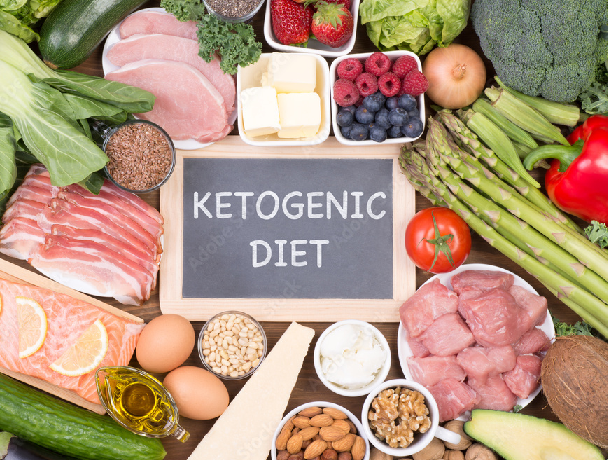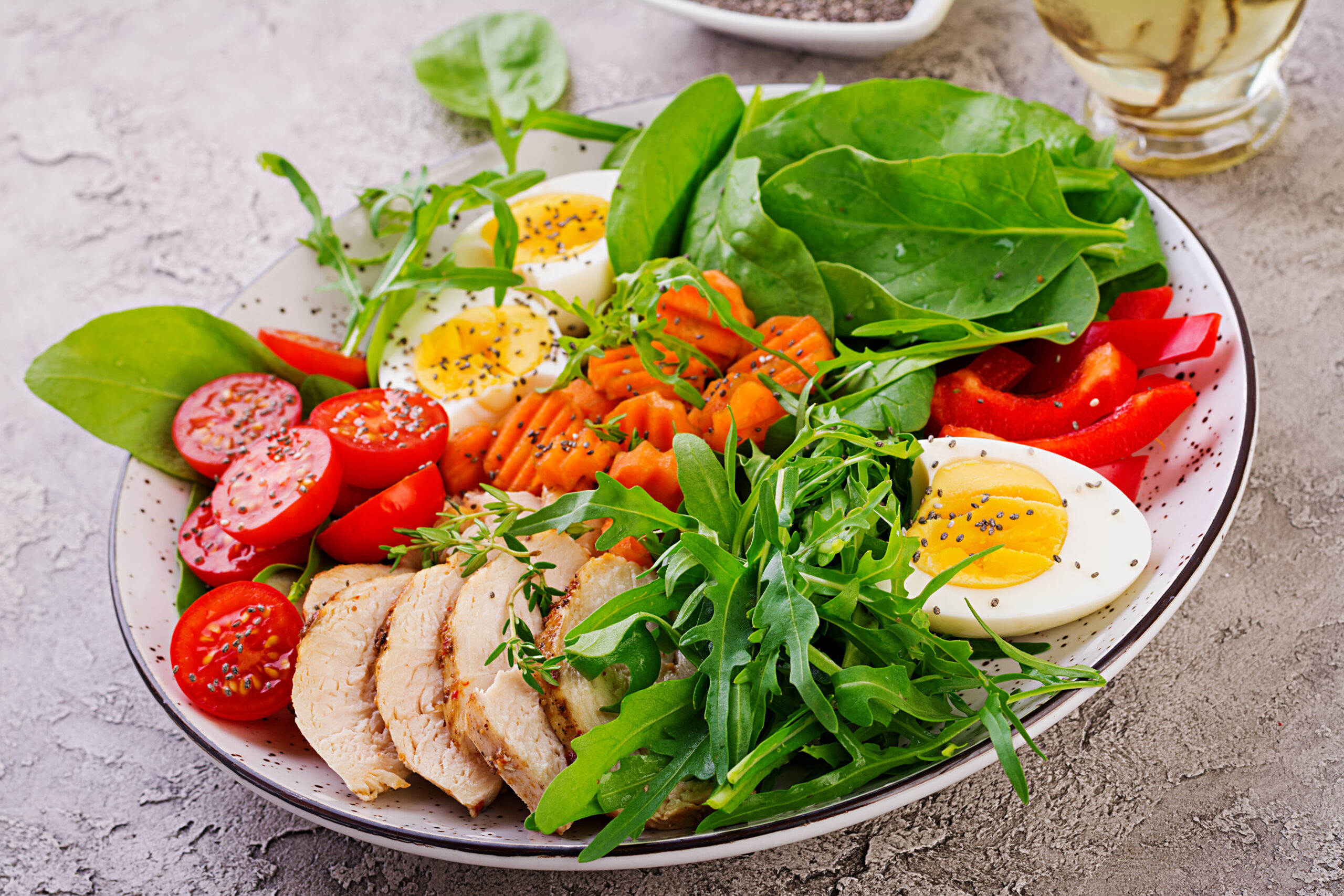Table of Contents
Introduction
The keto diet has been used for years as a treatment for certain conditions, such as epilepsy. However, its popularity has grown through medicinal use as a weight loss tool and lifestyle choice for people looking to improve their health.
In this comprehensive guide, we’ll understand the science and principles behind the keto diet, explore the health benefits, discuss the risks and side effects, and provide practical advice for success.
It’s worth noting that people can react differently to the keto diet, and it’s recommended to consult a doctor before embarking on any major dietary changes.
Know about Keto Diet in 10 Easy Steps
The Keto diet focuses on reducing carbohydrate intake while increasing healthy fats and proteins. This diet leads to a metabolic state called ketosis, in which the body uses ketones produced mainly from fat instead of sugar from carbohydrates as an energy source. To follow the ketogenic diet more easily, follow these 10 easy steps:

1- Learn about the Ketogenic diet: Learn the basics of the ketogenic diet, which focuses on fat, low protein, and low carbohydrates. Find out how ketosis works and what its benefits are.
2- Calculate Your Macronutrients: Use an online calculator to determine your daily macronutrient needs based on your age, weight, activity level, and health goals.
Aim to get 70-75% of your calories from fat, 20-25% from protein, and 5-10% from carbohydrates.
3- Prepare Keto-Friendly Foods: Fill your kitchen with keto-friendly foods like avocados, nuts, seeds, fatty fish, eggs, meat, and low-carb vegetables like spinach and broccoli.
4- Limit Carbohydrates: Reduce your daily carbohydrate intake to 20-50 grams, focus on non-starchy vegetables, and avoid grains, sugar, and processed fruit.
5- Include Healthy Fats: include healthy fats such as avocado, olive oil, coconut oil, nuts, and seeds in your diet. These oils will be your energy source.
6- Diet: Eat plenty of protein from products such as meat, poultry, fish, and tofu. Eating too much protein can disrupt ketosis.
7- Stay Hydrated: Drink plenty of water to stay hydrated and improve overall health. Adequate hydration is important for maintaining energy levels and promoting ketosis.
8- Avoid Processed Foods: Avoid processed foods and trans fats, as they can hinder your success on the ketogenic diet and can be bad for your health.
9- Plan Your Meals: Plan your meals ahead of time to ensure you meet your macronutrient goals, and don’t be tempted by high-carb options when you’re hungry.
10- Be Patient and Adapt: Give your body time to acclimate to the keto diet and be patient in the process. Listen to your body, adjust as needed, and don’t be too hard on yourself if things go wrong. Remember that everyone’s journey is unique and finding what works best for you is the key to success.
By following these simple steps, you can start a ketogenic diet and reap its health benefits.
Always consult a doctor before making any major dietary changes, especially if you have pre-existing conditions or concerns.
What foods are best for Keto Diet?
In the ketogenic diet, the focus is on eating foods that are low in carbohydrates and fat. The goal is to put the body in a state of ketosis where it burns fat instead of carbs for energy. Here are some foods commonly found on the keto diet:
Fats: Avocado, avocado oil, olive oil, coconut oil, butter, ghee, and nuts (like almonds, macadamias, and walnuts).
Protein: Meat (beef, pork, lamb, chicken), fish (salmon, tuna, sardines), eggs, and tofu.
Low-carb vegetables: Leafy greens (spinach, kale, lettuce), broccoli, cauliflower, zucchini, bell pepper, and asparagus.
Dairy: Full-fat cheese, heavy cream, and plain Greek yogurt (look for added sugar under yogurt).
Nuts and seeds: chia seeds, flax seeds, pumpkin, and sunflower seeds (in moderation due to their carbohydrate content).
Blackberries: small amounts of blackberries (in moderation), such as raspberries, blackberries, and strawberries.
Sweeteners: Natural keto sweeteners such as stevia and erythritol (do not use artificial sweeteners such as maltodextrin or dextrose).
Water: water, unsweetened coffee, tea, and herbal tea. Some people also add unsweetened almond milk or coconut milk.
Meat and fish: Grass-fed and organic meats are preferred whenever possible, and fatty fish such as salmon and mackerel are the best sources of healthy fats.
Sauces and food: Use low-carb herbs, seasonings like salt, pepper, garlic, and many keto-friendly toppings like mayonnaise and mustard.
Foods to avoid in Keto Diet
High-carb foods: grains (wheat, rice, oats), vegetables (potatoes, sweet potatoes, corn), and legumes (soybeans, lentils).
Desserts: All kinds of sugar (sugar, honey, agave nectar, etc.), soft drinks and fruit juices.
Snacks: Processed snacks, chips, and baked goods that contain whole grains and sugar.
High-Carb Fruits: Sugary fruits such as bananas, apples and grapes should be limited or avoided.
Alcohol: Most alcoholic beverages contain carbohydrates and should be consumed in moderation or avoided altogether.
Summary
The ketogenic diet, short for ketogenic diet, is a low-carb, high-fat diet designed to achieve ketosis, a metabolic state in which the body burns fat instead of carbohydrates. The body enters ketosis by reducing carbohydrate intake and increasing healthy fats and producing ketones that provide fuel for the brain and muscles.
The main point of the keto diet is to eat foods that are low in carbohydrates and rich in healthy fats, including avocados, olive oil, nuts, fatty fish, eggs, and low-carb vegetables such as spinach and broccoli. Low protein intake prevents excessive gluconeogenesis, which prevents ketosis.
The potential benefits of the ketogenic diet include weight loss, improved blood sugar control, heart health, and cognitive function.
However, some people may experience side effects known as the “keto flu” during the transition, which can be alleviated by staying hydrated and supplementing with electrolytes.
Foods to avoid on the ketogenic diet are foods that contain carbohydrates such as cereals, pasta, candy, and snacks. Alcohol consumption is usually limited due to its carbohydrate content.

